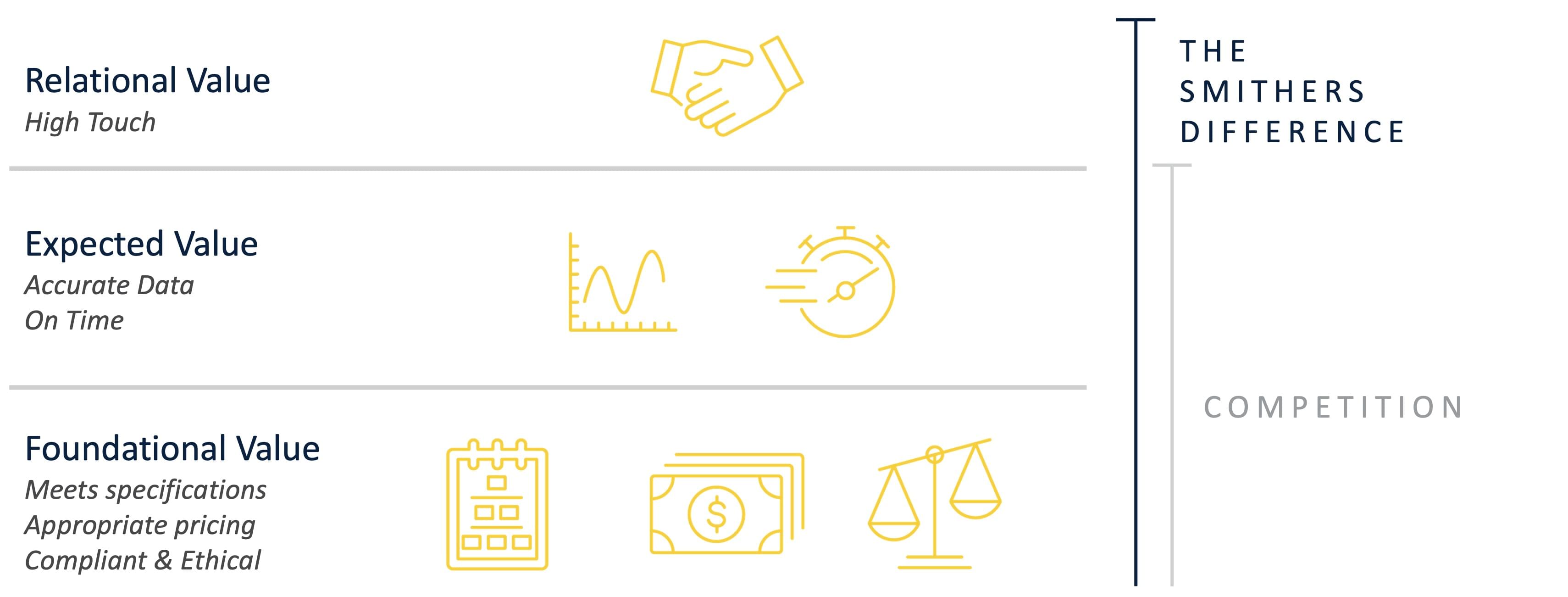ISO 45001 Checklist
Utilize the Smithers ISO 45001 Checklist to learn more.
Securing ISO 45001 certification is a vital milestone for businesses aiming to manifest their dedication to occupational health and safety management, as well as ongoing enhancement. Our ISO 45001 audit services are meticulously designed to confirm that your organization aligns with the stringent standards established by the International Organization for Standardization (ISO). With years of expertise and a commendable success record, we deliver a professional, comprehensive, and efficient auditing process tailored to your distinct requirements.

Smithers upholds an intrinsic foundational value when delivering third-party assessments. While numerous certification entities struggle to meet even the initial level, we consistently endeavor to reach the 3rd level by:
Our ISO 45001 auditing services cater to businesses across various sectors, including but not limited to:
Partner with us to achieve ISO 45001 certification and reinforce your organization’s dedication to safety and excellence. Reach out today to receive a no-obligation quote and take the first step toward certification.
ISO 45001 is an international standard for occupational health and safety management systems. It provides a framework to improve employee safety, reduce workplace risks, and create better, safer working conditions.
Any organization, regardless of its size, industry, or location, can implement ISO 45001. It is particularly beneficial for industries with high-risk environments such as manufacturing, construction, and healthcare.
Certification helps organizations enhance workplace safety, reduce workplace incidents, and demonstrate their commitment to occupational health and safety to stakeholders. It can also improve compliance with legal and regulatory requirements and build trust with employees and clients.
The time required to achieve ISO 45001 certification varies depending on the size and complexity of the organization. On average, it can take several months to fully implement the standard and undergo the necessary audits.
The process typically involves developing and implementing an occupational health and safety management system, conducting internal audits, and successfully passing an external certification audit conducted by an accredited certification body.
ISO 45001 certification is not mandatory by law in most countries. However, certain organizations and industries may require it to satisfy contractual, regulatory, or client requirements.
Yes, ISO 45001 is designed to be compatible with other ISO standards, such as ISO 9001 (Quality Management) and ISO 14001 (Environmental Management). Integration helps streamline processes and improve overall organizational efficiency.
Organizations must undergo surveillance audits annually and a recertification audit every three years to maintain their ISO 45001 certification.